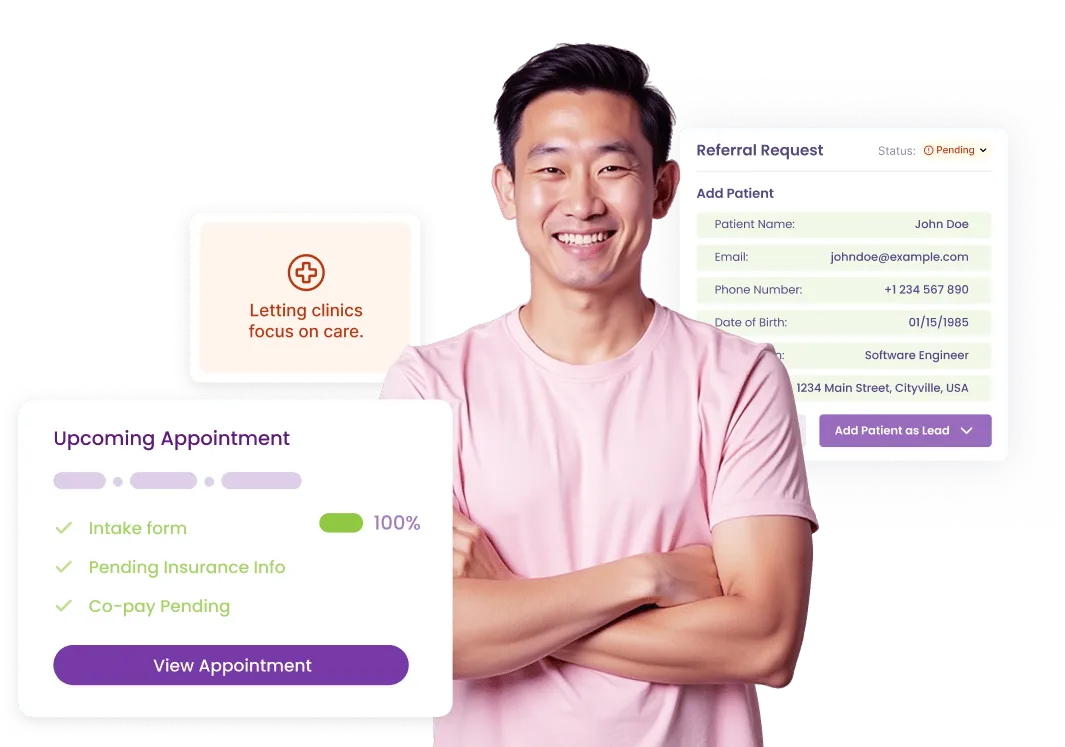98967 – Telehealth / Remote Behavioral Health Service
CPT code 98967 represents a distinct mental or behavioral health service, including evaluation, therapy, or care coordination.
What is CPT
98967
?
98967 is a specific CPT code utilized for remote or virtual care services within the telehealth framework. This entry provides an in-depth overview of the clinical applications, documentation requirements, and payer considerations associated with this code. To ensure compliance and optimize reimbursement, it is essential for providers to align their clinical notes with evidence-based interventions, clearly documenting treatment goals, interventions employed, and measurable patient progress. When billing is based on time, it is crucial to accurately record start and stop times to substantiate the billed duration, facilitating smoother reimbursement processes.

Documentation Tips
When billing for time-based psychotherapy using CPT code 98967, it is imperative to document the start and stop times accurately. In addition to the time metrics, include detailed information about the therapeutic modality utilized or the assessment instruments administered, the clinical focus of the session, the patient's response to the interventions, and a clear plan for follow-up care. For any scored instruments, retain copies of completed tools as part of the patient’s record. In the context of telehealth, ensure to document the patient's consent for the service, as well as the platform used for the interaction. Utilizing consistent documentation structures, such as SOAP (Subjective, Objective, Assessment, Plan) or DAP (Data, Assessment, Plan), will enhance audit readiness and ensure comprehensive records.

At a Glance
- Service Type: Telehealth
- Use Case: Remote / Virtual Care
- Typical Setting: Outpatient clinic or telehealth (subject to payer policy)
- Billing Unit: Per session / per instrument (varies by code)
- Common Pairings: 90791, 96127, psychotherapy codes
Billing Examples
During a telehealth session billed under CPT code 98967, the documentation should mirror that of an in-person visit while incorporating specific telehealth elements. For instance, if a clinician conducts a therapy session via a secure video platform, they should document the platform used, obtain patient consent for the telehealth service, and verify that synchronous communication was successful. It is vital to recognize that telephone consultations and asynchronous interactions may require different codes and often adhere to distinct reimbursement policies. Always check the specific requirements for each service type to ensure compliance.
Compliance Guidelines
- Before billing, confirm payer coverage and authorization requirements specific to CPT code 98967 to avoid claim denials.
- Thoroughly document medical necessity and ensure that all services provided are linked to appropriate ICD-10 diagnoses to justify the billed services.
- Utilize correct modifiers, such as modifier 95 for telehealth services, as mandated by payer guidelines to ensure proper processing of claims.
- Avoid the practice of upcoding; select the code that accurately reflects the documented time and level of service rendered to maintain compliance.
- Conduct periodic audits of clinical documentation and billing practices to minimize claim denials and enhance the overall quality of documentation.
Common ICD-10 Codes
Helpful links for mental health billing and documentation
- F41.1
- F32.0
- Z04.8
- F43.21
Additional Resources
Helpful links for mental health billing and documentation
Related CPT Codes
Helpful links for mental health billing and documentation
Got questions? We’ve got answers.
Need more help? Reach out to us.
Q1: What is this code used for?
A: CPT code 98967 is designated for billing when the clinical activity aligns with the defined parameters of the code. It is essential that all documentation supports the billed service to ensure compliance and reimbursement.
Q2: Can it be billed via telehealth?
A: Yes, many payers allow billing for telehealth services when the encounter is synchronous and proper modifiers and consent documentation are recorded. Always review specific payer policies before proceeding.
Q3: What documentation will payers request?
A: Payers typically request documentation that includes the duration of the service, therapeutic techniques or instruments utilized, patient response, and a clear link to a covered ICD-10 diagnosis to support the billing.
Q4: Can this be billed with other services?
A: Yes, when billing for multiple services, it is important to document distinct time and rationale for each service rendered. Utilize add-on codes or E/M separation rules where applicable to ensure accurate billing.
Q5: What are common denial reasons?
A: Common reasons for claim denials include missing time records, lack of documented medical necessity, incorrect use of modifiers, or billing services beyond frequency limits established by payer guidelines.

